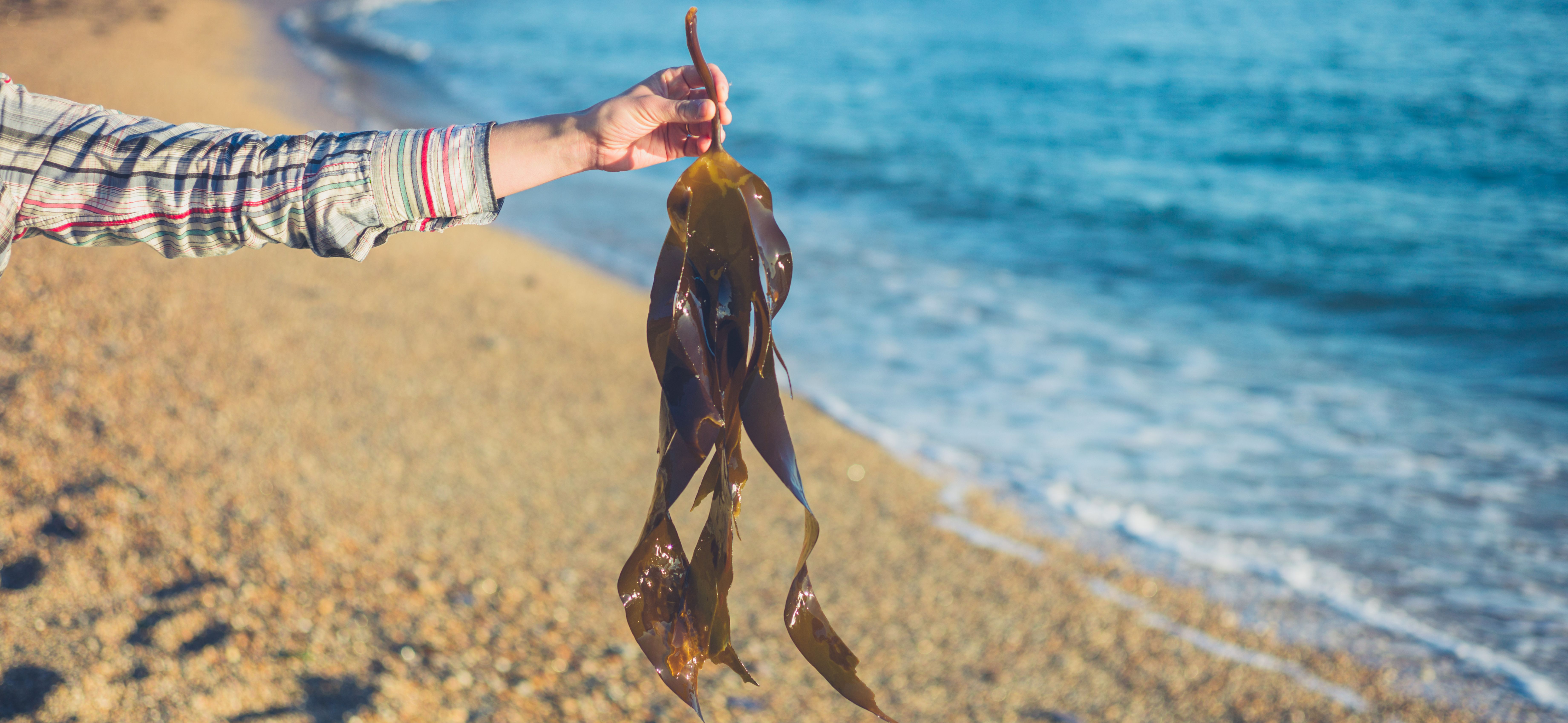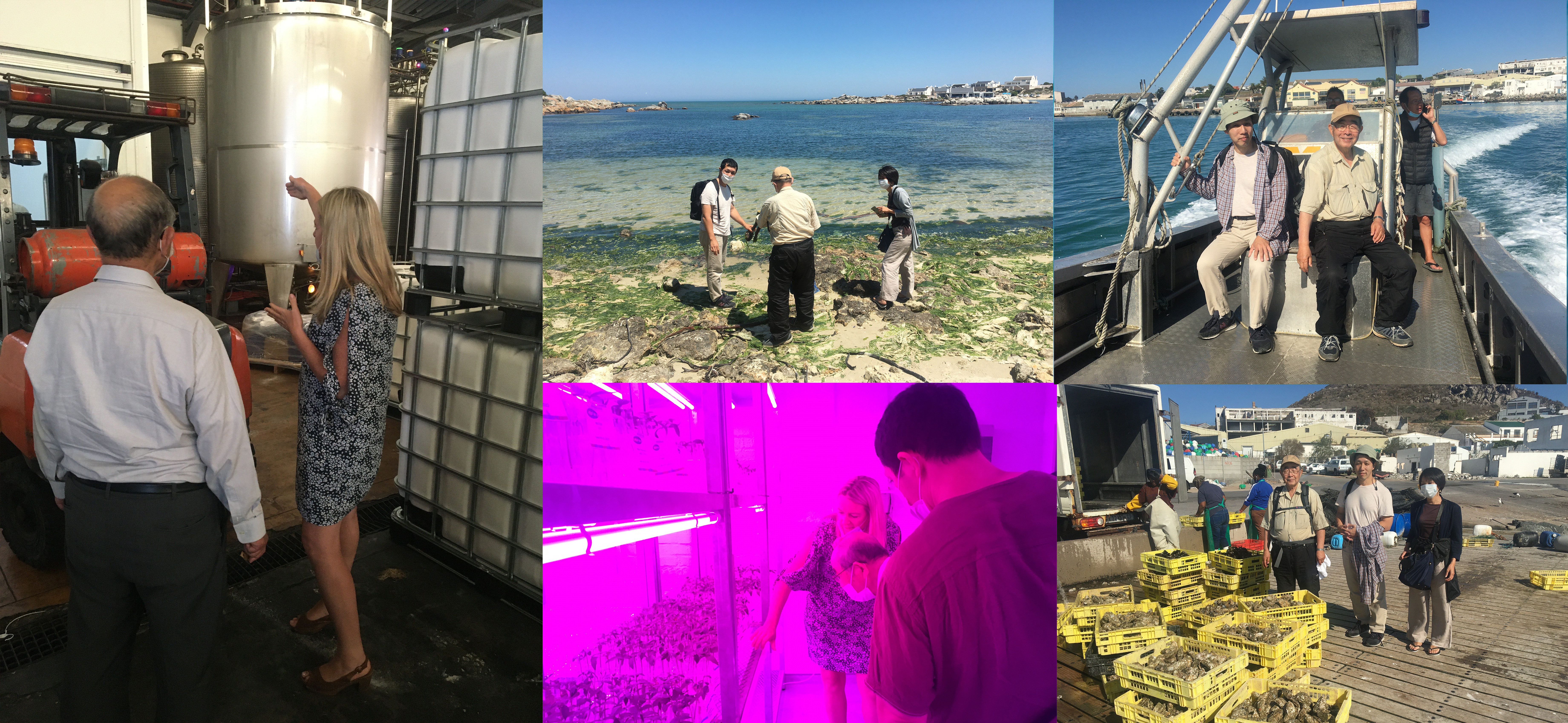South Africa
Sinking into Seaweed: Japan SDGs Innovation Challenge
March 21, 2023

Seaweed
This blog is the third instalment in our Seaweed Series. Please see Part one: Standing Up for SDG 14 and Speaking Up for Seaweed, and Part two: Searching for Seaweed Solutions.
The known seaweed diversity in South Africa includes approximately 900 species, making the country one of the richest marine floras in the world, with a high level of endemism (Amosu et al, 2013). Internationally, seaweed aquaculture has grown faster than any other marine production sector over the last 20 years, and there is a growing body of literature that suggests that seaweed will become a major component of global marine aquaculture, contributing towards the production of aquafeeds, functional foods, nutraceuticals and possibly human food (Bolton et al., 2016).
The farming of seaweed for direct human consumption does not take place on a significant scale in South Africa, particularly in comparison to other countries in the region. As FAO noted in 2018, “improving an understanding and awareness of the use of seaweed in human nutrition within the country cannot be over-emphasized” in order to promote socioeconomic benefits such as food security and poverty reduction.” ( FAO, 2018).
Commercially, South African seaweeds have been used as feedstock for phycocolloid production; production of abalone feed; and the creation of products which are plant-growth stimulants used in the agricultural sector. However, this is a very small sector comparatively with much room for growth and development. Research indicates that there are only four South African companies that are commercially involved in the seaweed sector. Government plans for the development of the aquaculture sector is focused on terrestrial farms for the farming of mollusks, shellfish, and fin fish. However, there is an enabling policy environment for the expansion of aquaculture.
Seaweed farming can offer the most vulnerable sectors in society alternative livelihood options, increased health and food security, and adaptation strategies to the changing climate. With the length of coastline and number of endemic species, South Africa has an uncapitalized comparative advantage in this sector.
In 2022, the UNDP South Africa Accelerator Lab was selected to join the Japan SDGs Innovation Challenge, run in partnership with the Japan Cabinet Office, and received funding to dive deeper into our seaweed explorations. The challenge began by calling for private sector Japanese partners, drawing on their rich experience and knowledge, to support us in designing and implementing an impactful project. Japan has a long history in the cultivation, harvesting, and use of seaweed, and with this centuries-old history, an established industry and value chains. After a global evaluation process, we found the perfect partner in the Seaweed Resource Institute.
The objectives of this challenge were to identify the most suitable species for cultivation based on market opportunities in Japan, grow rates, ease of cultivation, and opportunities for the development of local markets for offtake. The longer-term aim is to capacitate entrepreneurs and small, micro and medium-sized enterprises
(SMMEs) in seaweed cultivation and link them to organizations in Japan for the export of their product. By focusing on enhancing seaweed cultivation and value chains, we are not only contributing to economic growth and job creation, but also to climate change with the environmental co-benefits that seaweed brings.
The project began with a site visit and we were joined in South Africa by representatives from the Seaweed Resource Institute, including Professor Maseo Ohno, who has been working on seaweed throughout his esteemed career. Professor Ohno recalled a time he went on a research trip to Antarctica in the 1970s, saying that as the boat was coming back into Cape Town, he was studying the coastline and realized that it was the perfect environment for seaweed species to thrive. Over 50 years later, Professor Ohno was back in Cape Town to assist us with our research and developing this important industry.
The site visit provided us an opportunity to explore the western cape coastline and to meet with key stakeholders in the sector, for example, the National Department of Forestry, Fisheries and Environment’s Marine Research Aquarium, Saldanha Bay Aquaculture Development Zone, and commercial partners such as AfriKelp.

Seaweed expedition to Cape Town
There were a number of insights surfaced during this trip, with ‘inside’ knowledge and tips drawn from actors who have been experimenting with seaweed cultivation on the ground (well, in the water).
For example (and we will only include a few as these are quite niche):
1 - Ecklonia Maxima has better growth rates in water that has a lot of movement.
2 - Macrocystis is an easier species to transport unprocessed as it is lighter than other species and so generates less heat during transportation, leading to a longer shelf life.
3 - Terrestrial-based aquaculture farms are experimenting with seaweed to clean the effluent water pumped back into the sea from their farms.
4 - Sea cucumbers need to be boiled before pickling to make them less rubbery etc.
After this site visit, Professor Ohno and his team returned to Japan to complete the research report. This report can be made available to any reader who is interested (please see the email below) – in short, the key finding regarding the most suitable species to pilot cultivation is Gracilaria, using rope cultivation techniques, in the outer bay in Saldanha.
Gracilaria can be easily grown with low-tech, low-cost techniques using ropes. It grows quickly and is not as prone to mechanical damage as some other species. It is light in weight and so harvesting is not so labour-intensive. It can be processed locally with low-tech solutions into a powder form and a strong demand already exists in the Japanese market for this product.
The next phase of this project will be to p cultivation in Saldanha Bay. We will partner with local organizations to test growth rates and water quality and comparing vertical and horizontal rope cultivation techniques.
We also plan to continue working with the Seaweed Resource Institute to develop a market analysis of prospective Japanese companies to export the seaweed product to, as well as develop relationships with these organizations.
The AccLab implementation model focuses on developing value chains and markets in parallel with support to innovators and entrepreneurs. This ensures that any enterprise development we are involved in is sustainable, and that entrepreneurs are not left without a market once they have developed their product or service. In parallel to fostering links with Japanese companies, we have also engaged the local aquaculture sector extensively to develop the relationships and partners that can support our future entrepreneurs. For example, we have spoken to a leading abalone aquaculture farm that has already indicated an interest in purchasing unprocessed Gracilaria to be used as abalone feed.
As we move forward in designing our pilot project, diverse seaweed applications continue to develop across the world. For example, Asparagopsis has been found to boost animal immune responses and regulate gut bacteria; red seaweeds can also reduce over 80 percent of the methane produced by cows; brown seaweeds are showing promise for the prevention and treatment of Alzheimer’s disease and other neurodegenerative diseases; and macroalgae are being explored as a source for renewable biofuels.
This rich and diverse natural resource holds much promise to contribute to a number of the Sustainable Development Goal targets, and we hope to play our part in unlocking these seaweed solutions.
For anyone interested in joining our seaweed journey, please email simone.smit@undp.org.

 Locations
Locations